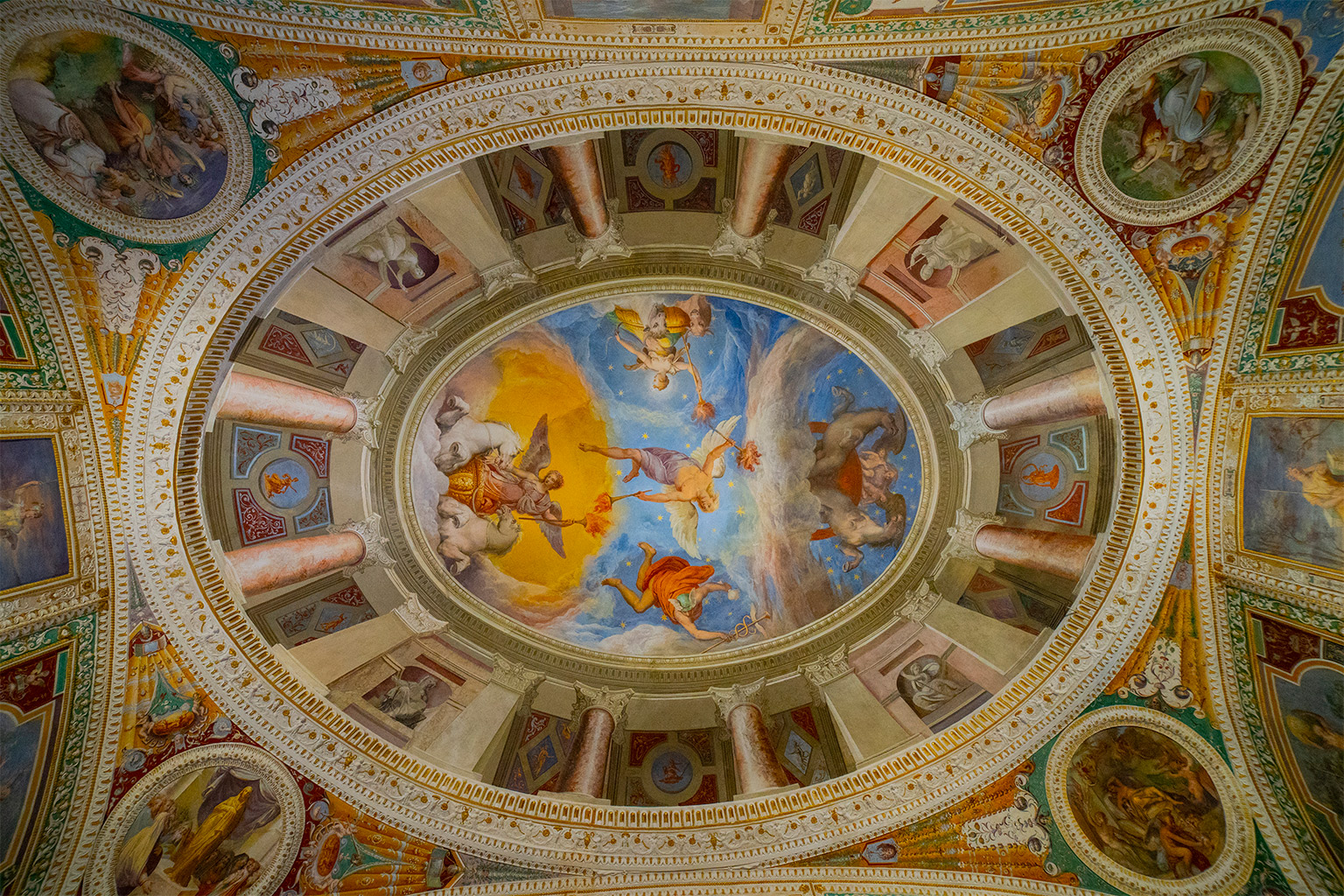palazzo farnese frescoes
The frescoed rooms of Palazzo Farnese are the Room of Jupiter, by Taddeo Zuccari, with scenes depicting the adventures of the god. On the vault of the room the birth of Jupiter is represented, rescued by his mother Rhea, who tore him from Crete to prevent the god Saturn from devouring him, as he used to do with male children. In the center of the vault the goat Amalthea is portrayed, in homage to Caprarola, in the act of breastfeeding Jupiter, who is rescued and for this reason placed between the sky and the constellations. Crossing the Room of Jupiter you reach the Room of Spring, frescoed on the ceiling by Zuccari. In this room the "rape of Proserpina" located inside the Summer Apartment, on the Prelates' Floor, is depicted and portrayed. This iconography is most likely to be attributed to Cardinal Alessandro Farnese's secretary, Annibal Caro. The way in which the kidnapping of Proserpina by Pluto is represented is as per tradition with the god stealing the girl by loading her onto his chariot, observed by her companions who helplessly watch the scene. From the portico you enter the Hall of Hercules, where you cannot help but admire the beautiful fountain, made of mosaic, placed on the right wall and built between 1575 and 1573, probably by Curzio Maccarone, who portrayed a city, cut by a river and surrounded by statuettes of cupids dripping water. The room is entirely frescoed with mythological figures, and the frescoes are the work of Bettoja and Federico Zuccari. The protagonist of the mythological scenes is Heracles.
One of the allegorical scenes portrayed in the room is the birth of Lake Vico, where according to legend Hercules struck the ground with his mighty club to challenge the inhabitants of Lake Vico. No one managed to remove it, only Hercules himself, and from that moment a jet of water gushed out and flooded the valley.
On one of the walls the fiefdoms of the Duchy of Castro and Ronciglione are portrayed. Adjacent to the Hall of Hercules, there is a small circular-shaped room, and Genesis is portrayed in the vault, with God placed at the center in the act of creating the universe world, a clear homage to Michelangelo's masterpiece in the Chapel Sistina is obvious. The Hall of Cosmography or Globes is certainly the most iconographic of the Palazzo Farnese in Caprarola, a vast hall located on the south-west side of the pentagon. In this room there are frescoes depicting the star map with the constellations, while on the walls there are geographical maps of the globe, Italy, Asia, Judea, America, Africa and Europe. Famous explorers of the time are also depicted on the walls, such as Vespucci, Magellan, Columbus, Marco Polo, and Cortez.
